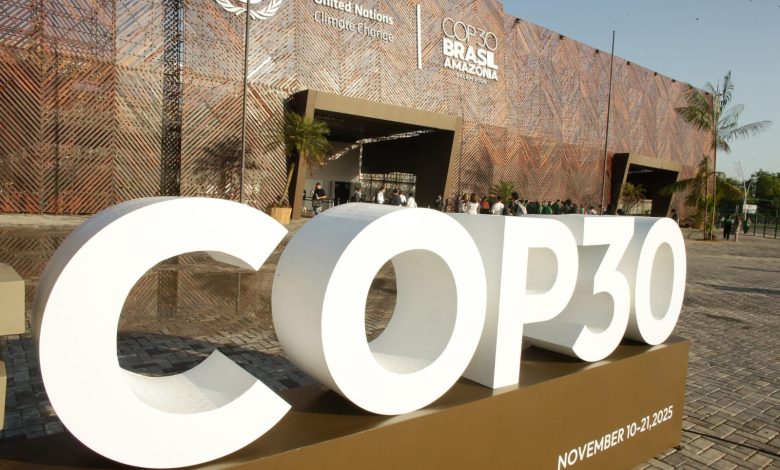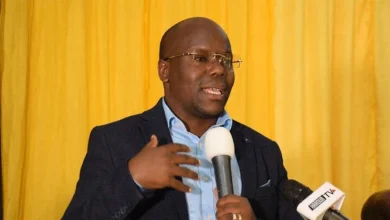COP30: Structural, not financial-strategic, not transformative

AS the dust settles on the 30th Conference of the Parties (COP30) in Belém, Brazil, I find it necessary to take a step back and interrogate what this year’s climate summit truly means for the East African economic landscape.
Beyond the headlines and formal declarations, the core question is whether COP30 left behind outcomes that can shift the region’s climate trajectory in any meaningful way.
This column examines the summit’s legacy through the lens of East Africa’s priorities scrutinising the progress made in climate finance, adaptation frameworks, regional diplomacy and the structural positioning that matters most for countries like Tanzania.
For those who followed the negotiations closely, COP30 did succeed in one respect: It sharpened global recognition of East Africa as one of the planet’s most climate-vulnerable regions and helped the bloc articulate a more coherent, unified narrative.
The challenge, however, is determining whether that narrative has translated into substantive gains or remains largely rhetorical. From my perspective, unlike in previous COPs, East African delegations this year managed perhaps for the first time in many years, to present an almost unified front on several critical issues.
These include strengthening adaptation financing, securing climate-linked debt relief, expanding targeted support for loss and damage and ensuring fairer access to global climate funds.
When examining how this collective position was leveraged to elevate the region’s visibility in negotiation rooms, it becomes clear that such consistency has enhanced East Africa’s long-term bargaining power, even though COP30 ultimately fell short of delivering the scale of financing required.
The legacy formed here is strategic rather than financial: It sets the groundwork for a more coherent and resilient negotiating bloc in future COPs and across key multilateral financing platforms such as the Green Climate Fund, the Adaptation Fund and the emerging mechanisms under the Loss and Damage framework.
This is important because the future climate successes of East Africa and of Tanzania, will depend more on diplomatic influence than on fragmented, individual-country efforts. COP30 has pushed the region towards that paradigm.
One of COP30’s most significant legacies for East Africa is the protection of political space for adaptation, even as global discussions increasingly pivot toward mitigation and carbon markets.
ALSO READ: Markets show selective investor activity
In evaluating the expanding opportunities within carbon markets, it becomes evident that East Africa depends far more on adaptation financing than on mitigation funding, given its acute vulnerability to droughts, floods, locust invasions and coastal erosion.
This focus is critical: While adaptation commitments remain modest, they have nonetheless ensured a steady flow of resources into established funds.
At the same time, COP30 highlighted the continent’s persistent adaptation financing gap. Technical discussions advanced mechanisms through which national implementing entities can improve access to climate funds, emphasising institutional frameworks over immediate financial inflows.
In this context, even if financial resources remain insufficient, East Africa has, unlike in previous COPs, successfully maintained adaptation at the centre of global climate dialogue, a vital achievement that will shape future budgetary and policy priorities.
Regarding the ongoing operational pathway for loss and damage, my interpretation emphasises that a win is about structure, not scale. In East Africa, where the frequency of cyclones, floods and displacement is increasing, the agenda surrounding loss and damage is of paramount importance.
The legacy of COP30 in this area is nuanced but far from detrimental. On one hand, recent progress on the global Loss and Damage Fund represents a notable step forward in its practical implementation.
Enhancements in governance, eligibility criteria and reporting frameworks have given East African states a clearer picture of the requirements for proposals and the processes for accessing this emerging facility. Conversely, financial commitments fell far short of the actual needs of East African economies.
The donor pledges made at COP30, in my view, were largely symbolic. In effect, while the architectural framework has improved, it remains constrained by insufficient financial backing.
The region’s structural readiness, however, suggests that East African nations are better positioned to absorb financial resources when global political dynamics enable greater capital inflows. Momentum for the energy transition has also gained notable strength, particularly in geothermal, solar and regional power pools.
COP30 reinforced the global commitment to substantial renewable energy integration, with significant implications for East Africa. In the aftermath of the summit, Kenya, Ethiopia, Tanzania and Uganda are strategically positioned to attract future transition financing for geothermal baseload power, hydropower enhancements and the strengthening of national grids.
The representation of East Africa in global renewable initiatives, including the Global Renewables and Energy Efficiency Pledge, has improved, potentially attracting concessional capital and private co-financing after COP30.
The renewable energy potential in East Africa has gained greater attention than at previous COPs, boosting investor interest and supporting upcoming powerpool integration initiatives as a tangible medium-term benefit.
While COP30 may not have delivered major breakthroughs, it has made notable progress in establishing the technical foundations for regional green manufacturing strategies, value addition in minerals, carbon credit certification and verification and frameworks that uphold integrity in voluntary carbon markets.
For Tanzania, Kenya and Rwanda, exploring nature-based carbon initiatives, biodiversity markets and sustainable mineral processing COP30 provided clearer frameworks for participation.
Improved clarity and credibility standards in carbon markets are essential for East Africa to avoid low-value transactions and maximise revenue from carbon sequestration initiatives.
ALSO READ: Global climate finance faces equity, efficiency challenges
Are there definitive outcomes to acknowledge from COP30? In my view, the answer is yes, albeit modest. Adaptation funding pledges, while insufficient, show a tangible commitment. Several pledges have increased allocations for Africa, providing new avenues for East African adaptation projects.
The enhanced framework for Loss and Damage remains incomplete and underfunded, but its operational structures are increasingly credible and functional, a vital step toward securing larger future funding.
National implementing entities across East Africa have benefitted from side agreements, capacity-building programmes and streamlined procedures established at COP30, enhancing their ability to absorb climate finance. With the global focus on expanding renewable energy, the region is well-positioned to leverage its abundant geothermal, solar, wind and hydro resources. Equally important, COP30 advanced regional climate diplomacy.
By presenting a unified East African narrative, the region strengthened its negotiating influence for future talks. The legacy of COP30 for the East African Economic Region is more structural than financial and more strategic than transformative.
While the region did not secure all the necessary funding, it achieved greater unity, established clearer financial pathways, gained improved institutional access, raised the profile of renewable energy prospects and enhanced global recognition of its vulnerabilities and priorities.
In sum, COP30 delivered a series of modest but tangible outcomes: New commitments, strengthened institutional measures on loss and damage and heightened global awareness. These results are stepping stones, laying the groundwork for more substantial achievements in the future.
However, COP30 ultimately fell short in delivering substantial and dependable financial resources for vulnerable and emerging economies.
For Tanzania, the path forward is clear: Leverage the institutional progress achieved at the summit to transform pledges into multi-year, reliable funding; improve accessibility; develop viable project pipelines and expand blended financing solutions to attract private capital.
Without these measures, COP30’s public statements may remain politically useful but will continue to fall short of providing meaningful support to the nations most affected by climate change.





